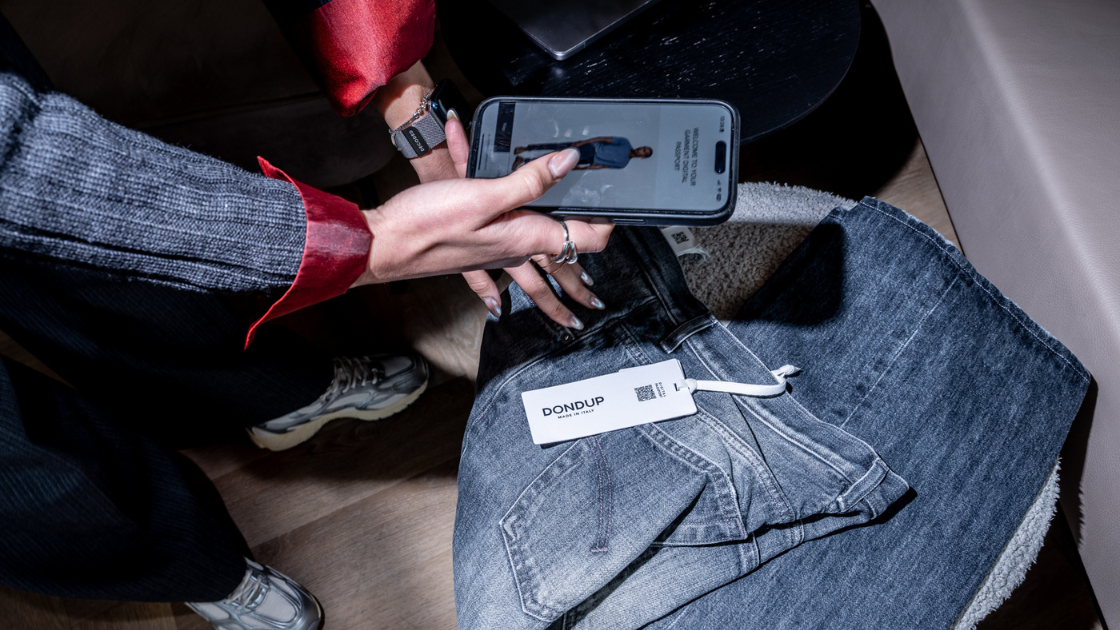As consumers demand more responsible fashion, brands must rethink how they approach product longevity. One key strategy is offering a repair service, helping customers extend the lifespan of their garments while building stronger brand loyalty and enhancing customer experience.
In this guide, we’ll explore why repair services are essential for fashion brands, how to implement them effectively, and how to integrate them into a Digital Product Passport (DPP) to create an easy, seamless experience for customers.
Why Fashion Brands Should Offer a Repair Service
1. Meeting Consumer Demand
Today’s consumers expect more than just sustainability claims – they want brands to provide tangible solutions to reduce fashion waste. Repair services offer an easy way for customers to keep their garments in use longer, reducing the need for constant repurchasing and making fashion more cost-effective for them.
2. Enhancing Customer Experience & Loyalty
By offering repair services, brands make it easier for customers to care for their garments, leading to higher satisfaction and increased brand trust. Customers who know they can repair their favorite items are more likely to return, strengthening their connection to the brand and encouraging repeat purchases.
3. A New Revenue Opportunity
Repair services can serve as an additional revenue stream, particularly for premium and high-end brands looking to provide white-glove aftercare services. Whether through a paid service or as a loyalty perk, repair programs can add value to the overall customer experience.
Key Steps to Implement a Repair Service
1. Define the Service Scope
Brands need to determine the type of repairs they will offer. Consider the following factors:
- Type of repairs: Minor fixes (e.g., button replacement, stitching), extensive restorations, or alterations.
- Target audience: Online customers, in-store shoppers, or VIP clients.
- Pricing model: Free repairs as a loyalty incentive or a paid premium service.
2. Choose a Repair Model
Fashion brands can implement repair services in different ways, depending on their operational structure and resources.
A. In-House Repair Services
Luxury and heritage brands often invest in dedicated in-house repair teams to maintain quality control and ensure brand consistency.
B. Third-Party Repair Partnerships
For brands without internal resources, partnering with specialized repair providers is a cost-effective alternative. Companies like Sojo, Mended, United Repair Center, and Save Your Wardrobe offer scalable solutions that integrate seamlessly with existing operations.
C. Tech-Enabled Repair Solutions
Some brands leverage technology to facilitate repairs, using digital platforms – such as the Digital Product Passport – where customers can request services, track repair status, and schedule appointments.
Solution Providers for Repair Services
Here are some key players offering repair solutions tailored for fashion brands:
- Sojo: A tech-driven approach to clothing alterations and repairs.
- Mended: A sustainable repair service supporting brands and consumers.
- United Repair Center: Offers scalable repair programs for fashion brands.
- Save Your Wardrobe: Provides digital solutions for garment care and repair.
By partnering with these providers, brands can efficiently manage repairs while enhancing customer satisfaction and engagement.
How to Integrate Repair Services Into a Digital Product Passport (DPP)
The Digital Product Passport (DPP) allows brands to document the history of a product, from material sourcing to repairs and end-of-life options. Here’s how brands can integrate repair services into their DPP:
1. Tracking and Recording Repairs
Each repair should be logged into the digital passport to provide customers with full visibility into their garment’s lifecycle. This data can include:
- Type of repair completed
- Date of repair
- Location or service provider
2. QR Code Integration
Adding a QR code to each product allows customers to instantly access their item’s DPP, including repair history and care recommendations. This enhances engagement and fosters a stronger connection between brands and consumers.
3. Seamless Customer Experience
By integrating repair services into the DPP with Renoon’s Digital Product Passport solution, brands create a hassle-free way for customers to request repairs and track their garment’s history. This improves customer retention and makes fashion more convenient and sustainable for them.
Launching a repair service is not just a sustainability initiative – it’s a strategic move for fashion brands looking to enhance customer loyalty, create new revenue opportunities, and provide a seamless experience. By defining a clear repair strategy, partnering with the right service providers, and integrating repairs into a Digital Product Passport, brands can strengthen their customer relationships while differentiating themselves in a competitive market.
Renoon helps brands integrate Digital Product Passport solutions effortlessly.
Get in touch with Renoon today to enhance customer loyalty and make fashion more circular.




























.png)

.png)
.png)
.png)
.png)

.jpg)
.png)
.png)



.png)
.png)


.png)
.png)

.png)
.png)


